April 13, 2022 - 4:26pm

Colomba di Pasqua 2022

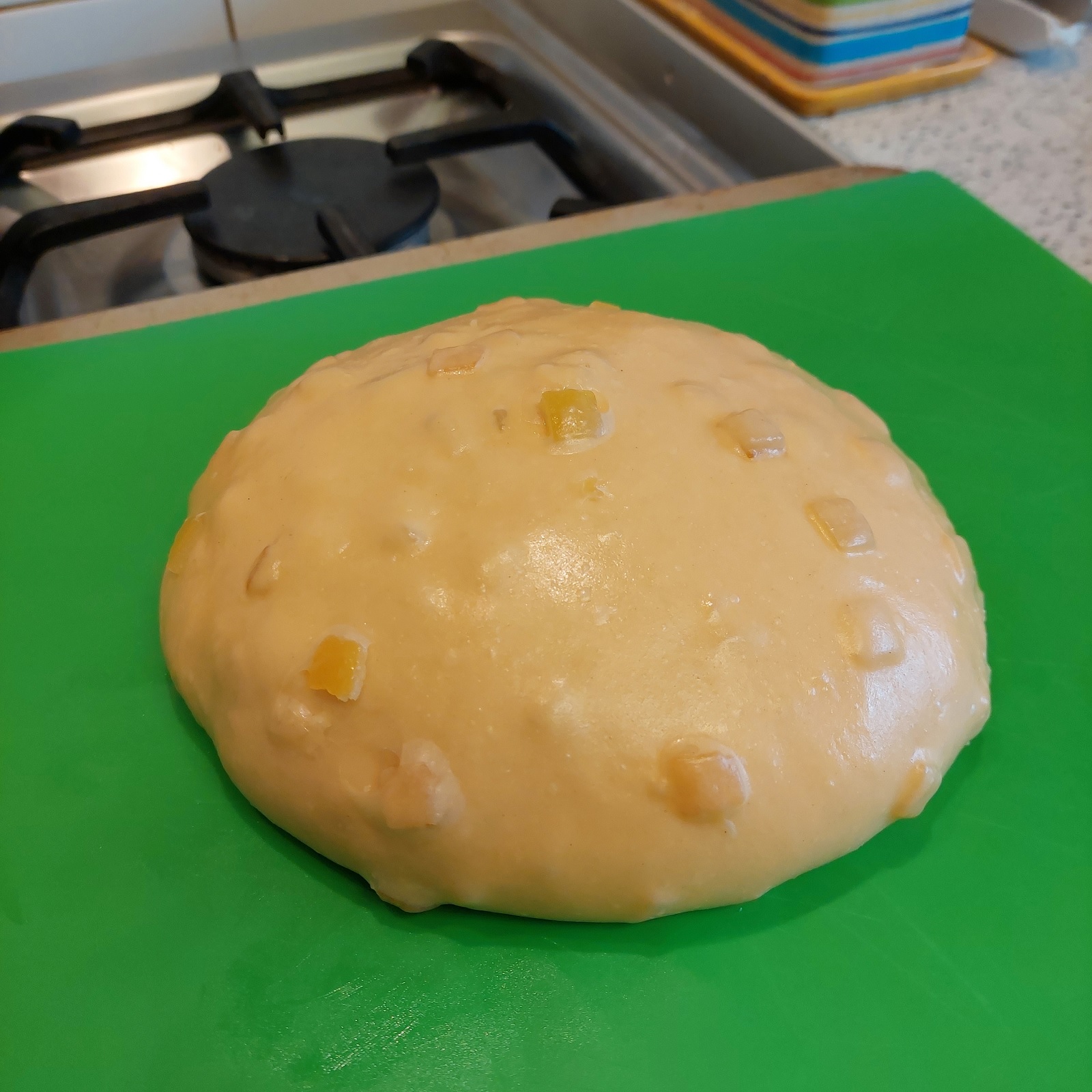

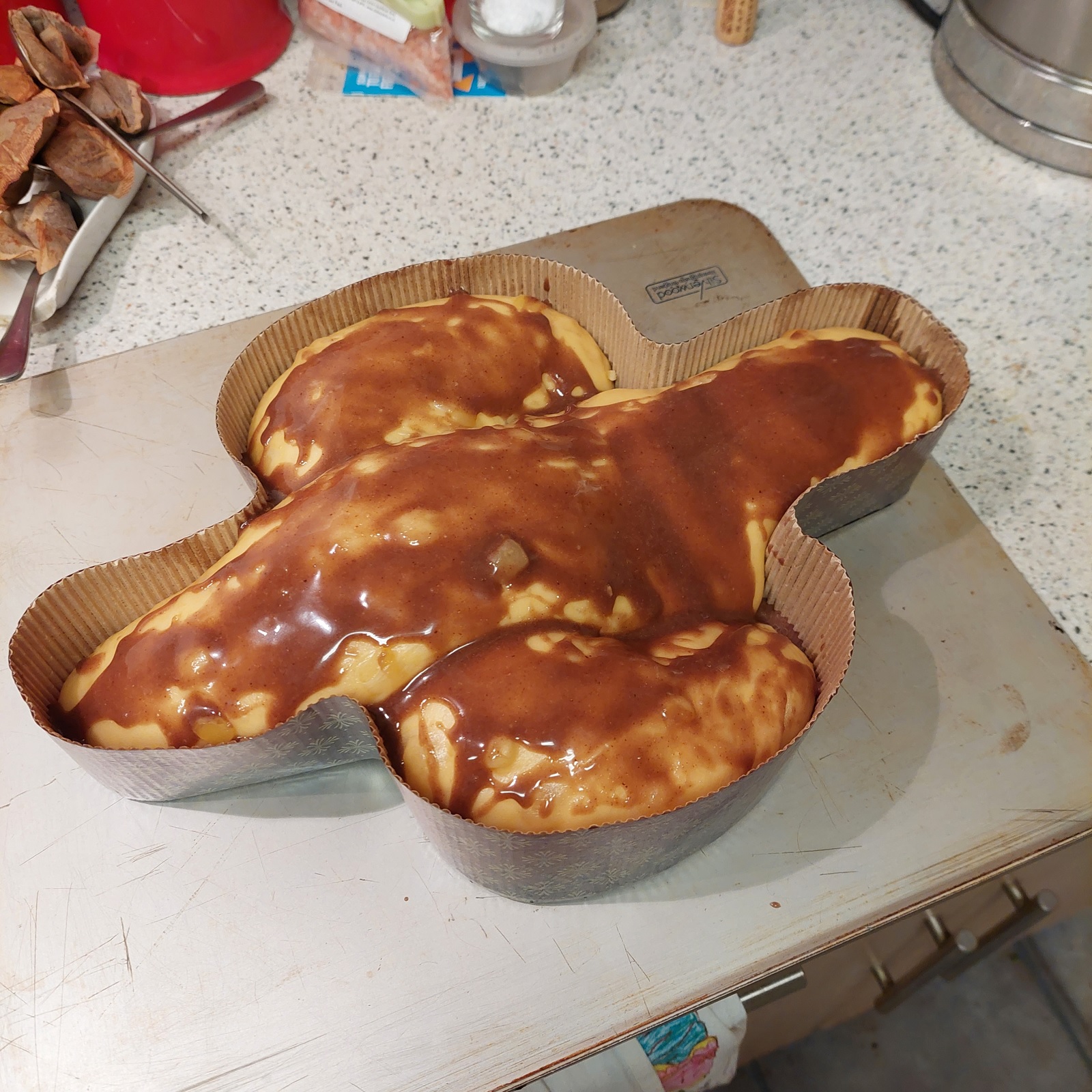
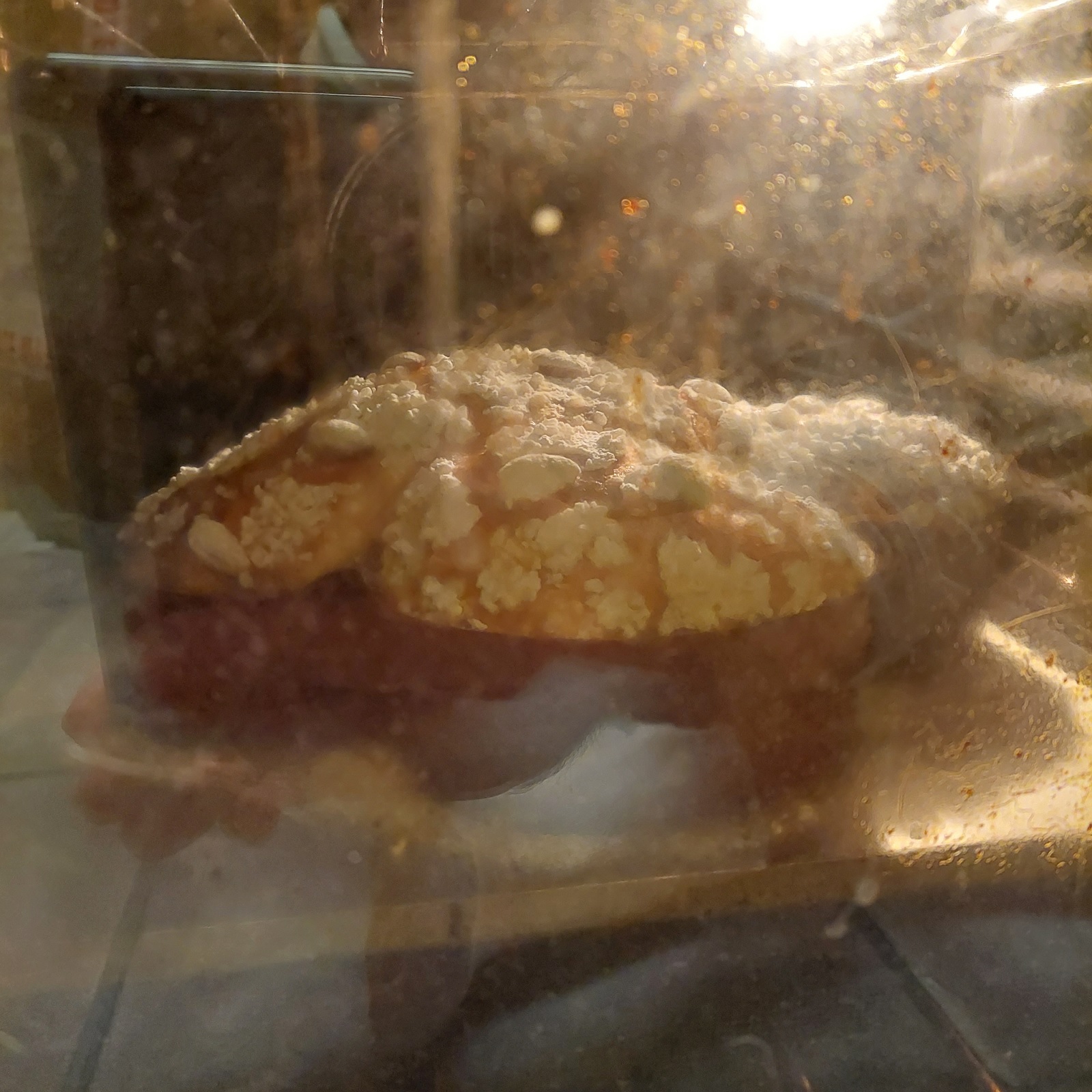
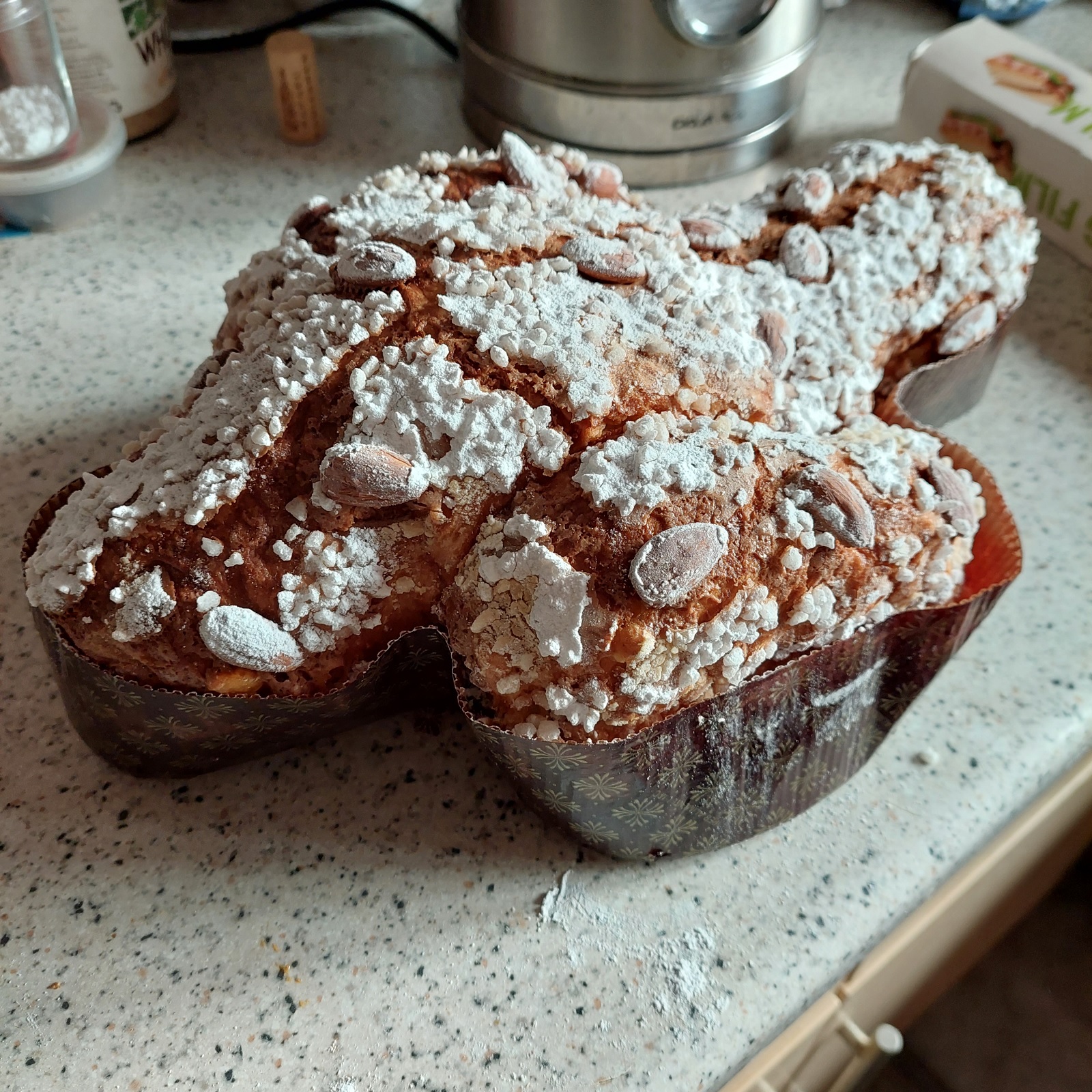
| Federica Russo Colomba (classico) | |||
| Primo | |||
| flour | 57.1% | 2120 | 200 |
| LM | 16.4% | 610 | 58 |
| water | 28.6% | 1060 | 100 |
| sugar | 16.4% | 610 | 58 |
| egg yolks | 14.3% | 530 | 50 |
| butter | 20.2% | 750 | 71 |
| Secondo | |||
| flour | 42.9% | 1590 | 150 |
| sugar | 16.4% | 610 | 58 |
| honey | 5.7% | 210 | 20 |
| salt | 1.1% | 40 | 3.78 |
| egg yolks | 14.3% | 530 | 50 |
| butter | 27.0% | 1000 | 95 |
| water | 8.1% | 300 | 28 |
| candied orange | 72.8% | 2700 | 255 |
| 341% | 12660 | 1196 | |
Still issues with acidity / pH. But it was easy enough to make!
-------------------------------------------------------
2 ½ Days later I made the cut.
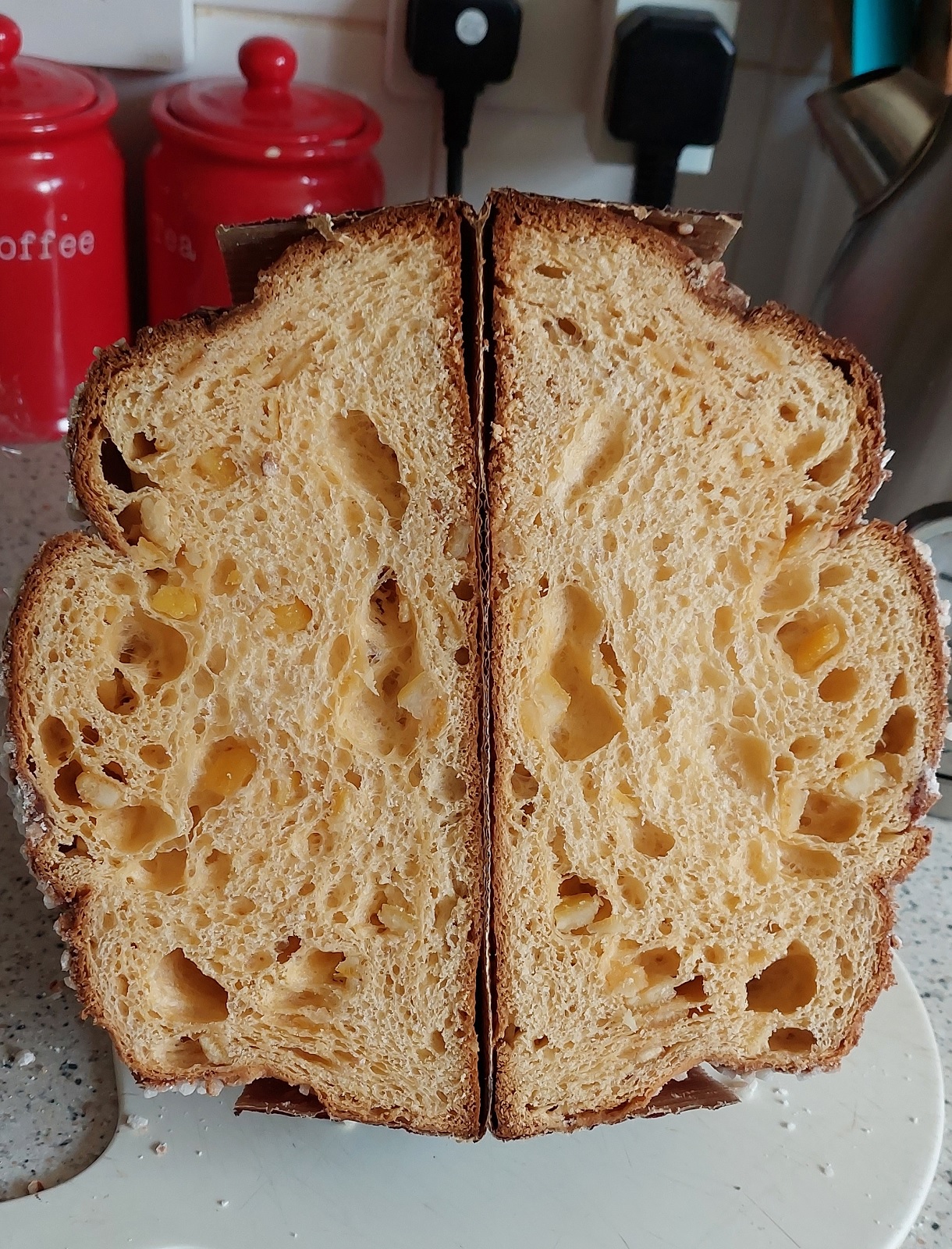
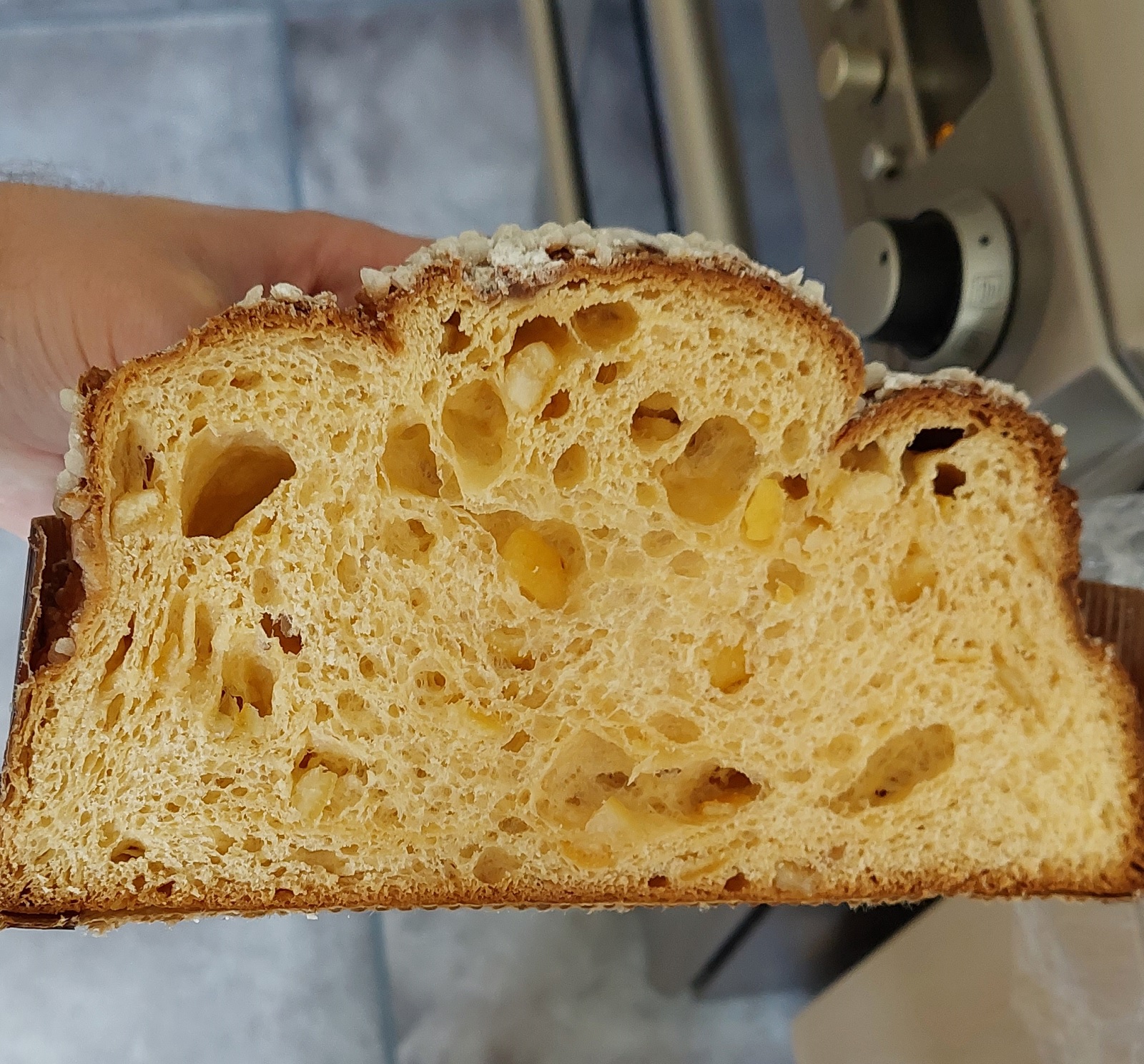
Colomba and coffee.

Tastes good! Really good!!! 👍
Happy Easter!


Comments
Another brilliant bake, Michael. Your breads are the best.
Do you use two kinds of sugar to top it or just one? I can't tell if it's homemade or you combined Belgian sugar bits with powdered sugar. You don't include the ingredients for the glaze and the toppings in that formula, do you?
It looks so pretty, so pure and festive, truly the best to celebrate Easter.
Thanks, mariana!
I've made the glaze so many times I barely think about it and make it from memory.
I do the following:
Weigh caster sugar, 40g, add 20g of ground almonds and then a scant tsp of cornflour (corn starch) and cocoa. Mix and take half which is just enough to glaze 1 Colomba. Take egg whites which have been loosened with a bit of whisking, and add to the dry ingredients to create the right consistency (spreads but doesn't run).
Top with whole almonds, sugar nibs and yes finally dust generously with icing (powdered) sugar.
Thank you for sharing your secret recipe, Michael! I even thought for a moment that you used black tea extract for it (noticed some teabags in the corner of one of the photos). But no, it's cocoa/almond flavored.
Wishing you a blessed Easter!
...and a holey crumb in your Paloma de Pascua. :)
m.
Saved yourself a trip to Piemonte Michael.
Mariana zooming in on the ornamental granulometry.
Buona Pasqua!
Tom
No frequent flyer miles for this guy, hahaha thanks Tom!
Buona Pasqua!
Michael
A thing of beauty Michael it truly is. I hope you post the crumb too!
Benny
Thanks Benny, much appreciated!
Please see above the updated post including the crumb!
I can see the effect of the pH on the crumb, but I can't taste it!
Also, I squashed the wing slightly when cooling upside down!
One lives and learns.
Michael
The crumb is very pretty Micheal, you say you can see the effect of the pH but most of us wouldn’t notice it one bit. Happy Easter.
Benny
Nice to see a next level bake from you even if it was punctuated with “but it was easy enough to make” I am in awe of the dedication required to even attempt such a bread. Thanks for sharing
Don
Thanks for your kind words, Don.
To be fair I have made quite a few over the years, so it gets easier with practice!
Still, I'm glad you liked this.
Cheers,
Michael
Beautiful Michael! I'm going to try more panettone soon - always such a challenge for sure.
Thank you meb21.
Yes, indeed it is a challenge to get this right!
I'm glad to see your LM journey is getting back on track. How long did the primo impasto take?
Lance
It has taken a bit of time to work things out with my Lievito madre starter. I've learnt a few things and I'm now very much an advocate of the binding (legato in sacco) / Milanese method for the overnight rest.
The primo impasto leavened well and on time 12/13 hours at ~25°C. But as I mentioned the pH was still an issue, low 4.x territory! I only chose to proceed because the risen primo impasto gave off a very pleasant alcoholic aroma and with no sign of volatile acetic sourness, which was a massive relief!
Michael
I've been following the discussion on LM acidity, because I'm having the same issue. I am so glad your Colomba turned out well, and it looks delicious!!
I will switch to the bound overnight method, in hopes of changing the balance in my LM in a favorable direction. It has been showing pH 4.1, but I get 2nd Impasto failure every time. Are you using a vacuum bag inside the wrapping?
thank you
Thanks Sue,
Yes to vacuum bag. But that's just something I do. In recent times I have clearly observed the pitfalls of tying too tight. It is best tied to fit, snug, not loose nor tight. It's seems the tighter it is tied, or the less room it has to expand the more it impedes the yeast development.
Just curious about your vacuum bagging process -- do you use a chamber vacuum or a suction type vacuum? I would imagine that they would have different effects.
Hi,
First thing to say, is that vacuum sealing is really not important, and it is something I developed as a way to ensure a full enclosure. What is important, is to trap CO2, and hence why I thought vacuum sealing would be an ultimate solution. As I have learnt, a sealed environment given little to no room to expand is detrimental.
My vacuum sealer is a suction type, which I manually operate, but I'm not looking to take all the air out, just to ensure a seal to create an anaerobic environment.
I thought pressurized fermentation was actually intended. But it does definitely stress the yeast, possibly hindering growth (this happens in pressurized fermentation for brewing at least). If the goal is simply to make it anaerobic, then wouldn't the whole binding part be unnecessary if plastic is used (well I guess plastic doesn't trap all the gas, but neither does the skin/cloth)? I'm asking because I'm thinking about trying out binding my LM. It's supposedly the "best" method, but requires the most experience and is probably the most difficult to use due to the extra difficulty in managing acidity and other things.
Trapping some measure of CO2 is important as indicated by the pressure build up, however tying too tight can definitely be detrimental.
Look at this way using just cloth with or without plastic wrap inside is sufficient as it's what the maestros do. I myself went one step further choosing to use a vacuum sealing device.
Under the conditions of binding the fermentation is modified in several ways. To me it appears to preserve the redox potential (its oxygen level) through the extended period of fermentation. Massari says the CO2 "fixes" the acidity, I take this to mean the carbonic acid from dissolved CO2 gas helps to rapidly decrease the pH that otherwise occurs through hetero-lcatic fermentation. He says sugar in the dough in consumed at half speed.
Also it worth nothing that CO2 is used in the food industry for its bacteriostatic properties.